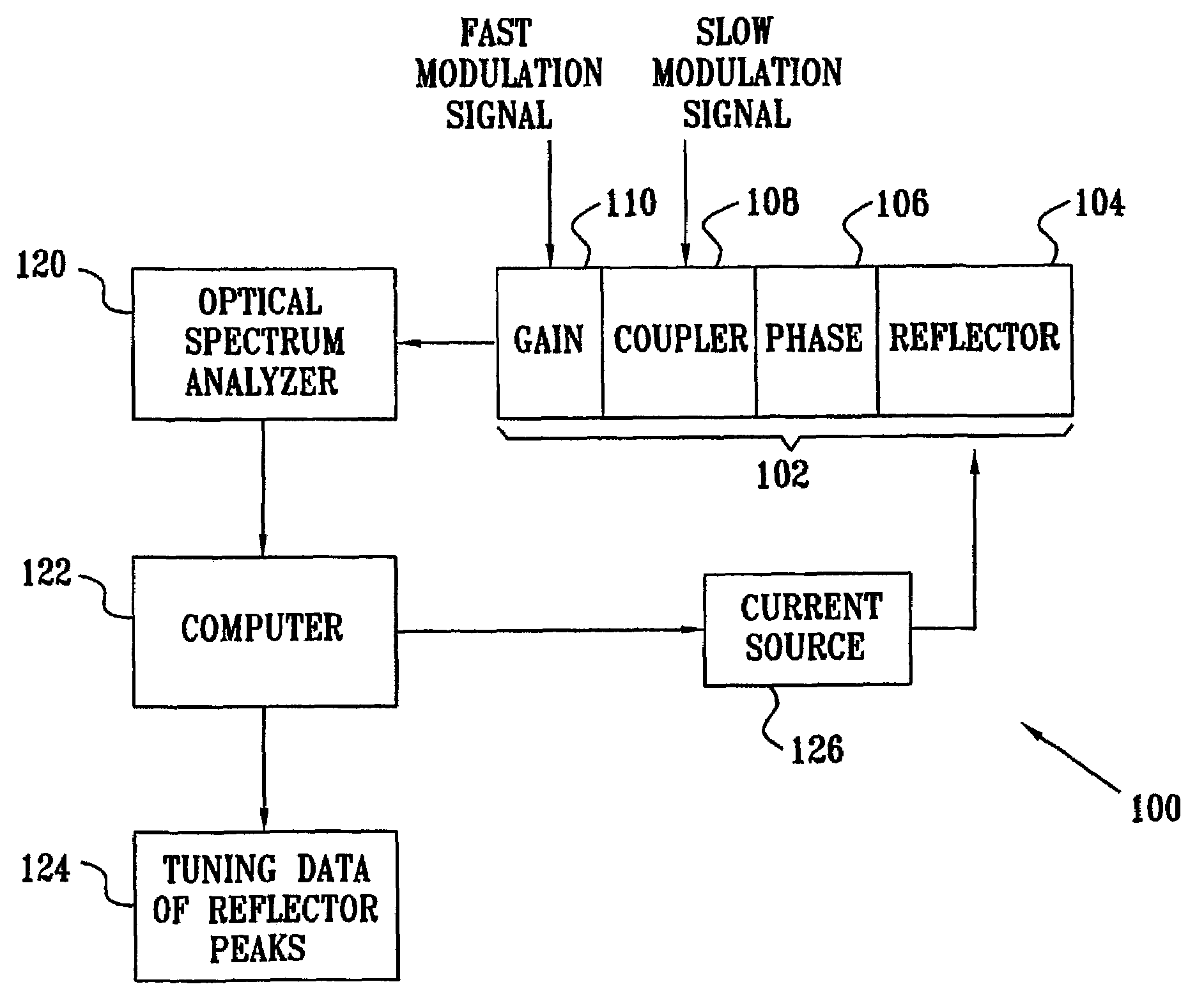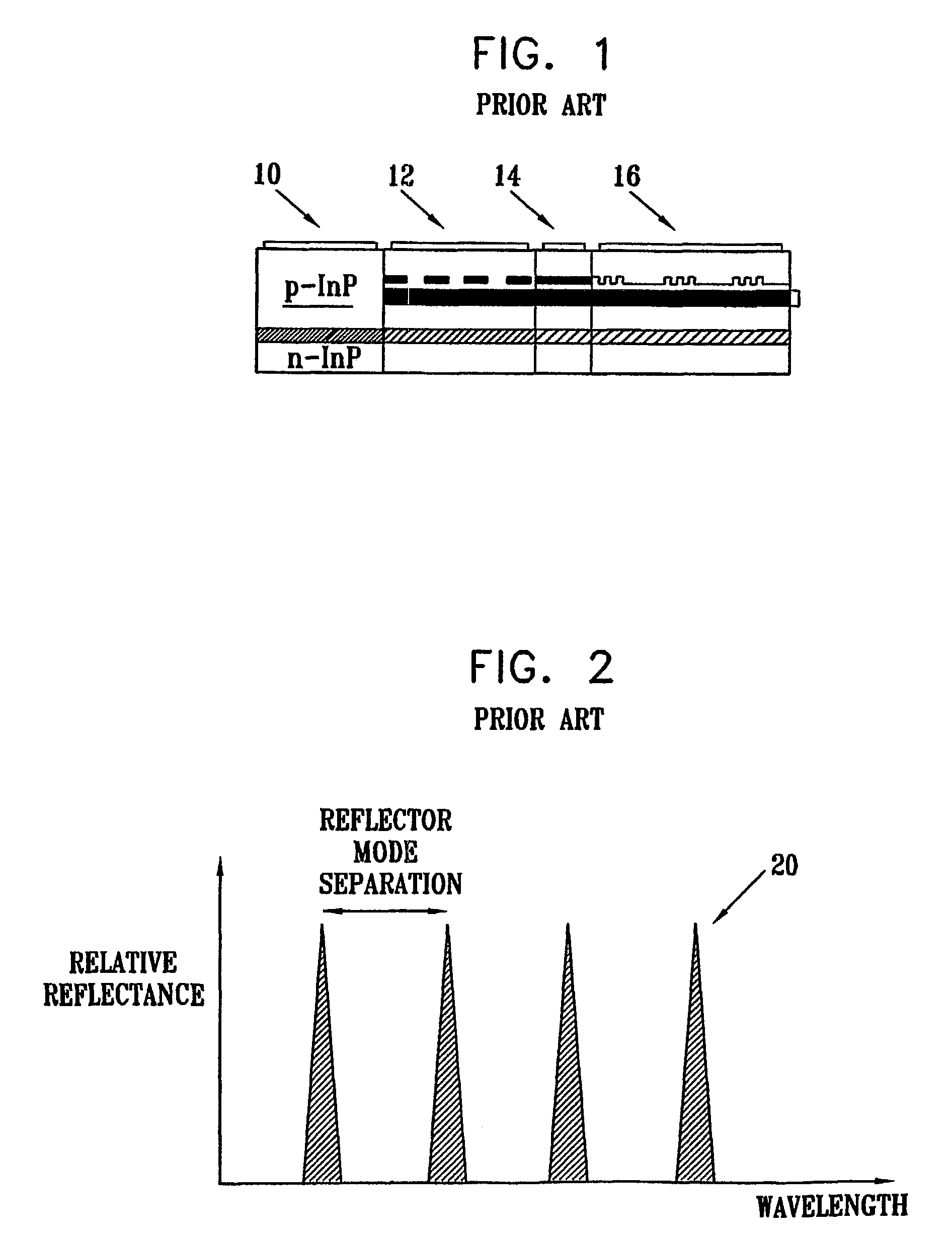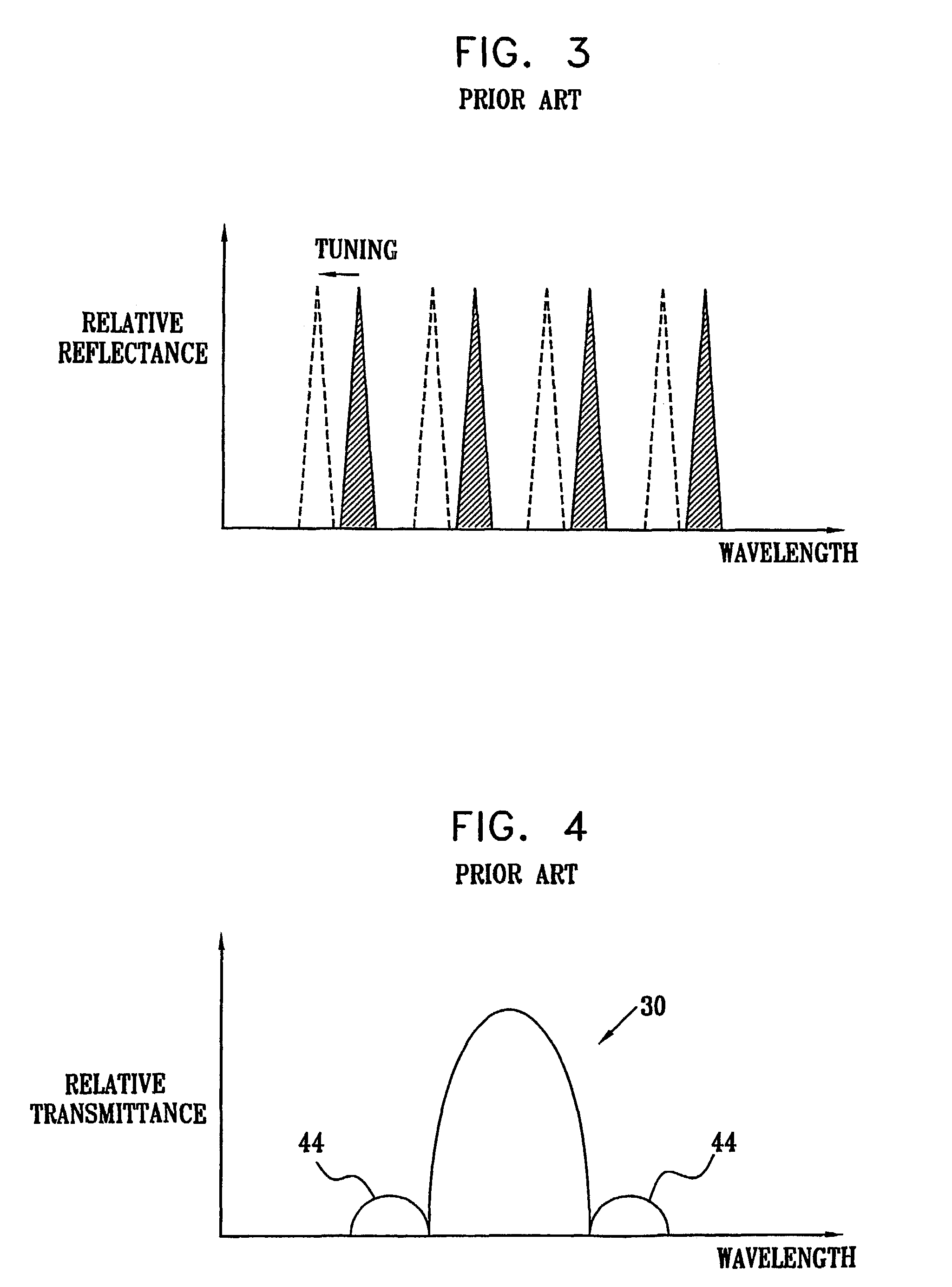[0012]The present invention seeks to provide a new method that substantially reduces the time for characterization of TSLD's as compared to that of prior art methods. In this method the laser is stimulated in a way that discloses the optical properties and tuning current dependency of the individual sections of the laser, separately for each section, and independently of the other sections. This reduces the problem from a multi-dimensional problem, to a set of separate one dimensional problems which can be solved serially. Once this has been performed, each section of the laser can be tuned separately to the desired wavelength, independently of the other sections.
[0013]The method, according to a preferred embodiment of the present invention, is operative to maintain fairly constant lasing
power level during a change in one of the tuning currents, without the need to adjust the other currents. This enables the monitoring of the change in wavelength associated with the tuning of that particular section alone, without dependence on the other sections. Unlike the situation existing in the prior art methods, according to the various embodiments of the present invention, the output of the laser can be observed continuously during the characterization process, without the need for continuous adjustments of the various section currents.
[0017]It is known that during turn-on time, or when the laser is modulated, i.e. the
gain section is modulated, preferably by current modulation, the laser exhibits multimode operation. This is because of the time required for the main lasing mode to build up and dominate over the other
modes. When the laser is modulated at a high enough rate, there is not enough time for this build-up to be completed. In this case the
gain section acts as a quasi
white light source, in accordance with the discrete Fabry Perot modes present, making it possible for a number of modes to arise without the need for
phase adjustment using the phase current. These modes will be at wavelengths of high net gain in the laser cavity.
[0018]According to another preferred embodiment of the present invention, the application of modulation to the gain section makes it possible to view the
spectral response of the laser, including the combined
spectral structure of all the sections over a wide range. A change in the tuning current to one section shifts the total spectral response of the laser and also consequently the radiating modes, thus making it possible to determine the tuning characteristic of that section.
[0019]According to another preferred embodiment of the present invention, instead of modulating the gain in order to stimulate multi-mode operation, modulation can be applied to the phase section. As the phase current changes, the Fabry Perot modes shift in wavelength and effectively scan the spectrum, providing an opportunity for different wavelengths to radiate, provided the modes associated with those wavelengths have enough gain in the cavity. These wavelengths do not radiate simultaneously, as opposed to the previously described embodiment of the invention, where the gain section is modulated. However, by viewing the complete spectral output of the laser, integrated over a time significantly longer than the modulation period, it is possible to obtain a complete plot of the gain versus wavelength. Thus, by changing the tuning current to one of the sections, it is possible to monitor the change in the spectral response of the laser, and to obtain the tuning characterization of that section, independently of the other sections.
[0020]When the laser is stimulated to operate at many wavelengths, according to either of the above-preferred embodiments using gain modulation or modulation of the phase section, the gain in the cavity depends on the product of the transmission of all the wavelength selective sections in the laser. According to another preferred method of the present invention, in order to isolate the response of one section only, an additional modulation
signal is applied to other sections, thus effectively canceling the spectral effect of the modulated sections on the laser output. The response of those sections is spread over the complete spectrum of the laser output. The total time-integrated response of those sections is thus uniform. The only element of the laser that maintains a wavelength selective function is that of the section that is not modulated. Consequently, that section alone will essentially determine the wavelengths and relative powers that the laser emits. Changing the tuning current to that section enables the monitoring of the change in the spectral response of the laser, and thus the determination of the tuning characterization of that section.
 Login to View More
Login to View More  Login to View More
Login to View More 


